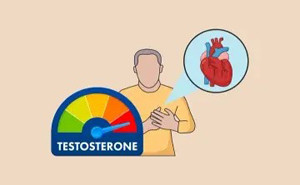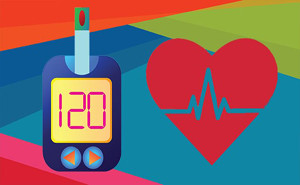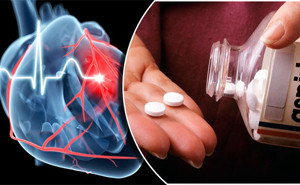Featured
Annals of Internal Medicine: Published May 2024Testosterone (T) levels slowly
decline as we age, and serum hormone-binding globulin (SHBG) levels gradually
increase. As SHBG increases, there is less T available to the tissues. There
are several conditions that reduce levels of T; these include being overweight,
having metabolic dysfunction, liv...
Clinical studies have produced
conflicting evidence on the effects of the consumption of tomatoes on blood
pressure, and there are limited data from epidemiologic studies. This study
assesses whether tomato consumption (Solanum lycopersicum L.) is associated
with Systolic (SBP) and Diastolic Blood Pressure (DBP), and the risk of
hypertension i...
Diabetes Care: May, 2023Type 2 diabetes is associated with
increased risk of microvascular and macrovascular disease, with the risk of
cardiovascular (CV) mortality more than double in people with type 2 diabetes
compared with those without. In the last decade, large dedicated
CV outcome trials in people with type 2 diabetes and at high risk or...
ADA: Diabetes Journals: Published June 2023Diabetes mellitus (DM) is one of the most important causes of
CKD. Moreover, both DM and CKD are important risk factors for cardiovascular
disease (CVD). Metformin is still the first-line drug for DM management. The
concern, of course, is an increased risk of metformin-associated lactic
acidosis (MALA)...
Journal of the American
Heart Association (AHA): Published on November, 2022Sleep, alongside diet and physical activity (PA), is one of
the 3 pillars of health, but unlike other health behaviors, healthy sleep is
not included in the American College of Cardiology/American Heart Association
(AHA) cardiovascular disease (CVD) prevention guideline...
Journal of the American College of Cardiology: Published on December,
2022Healthy dietary patterns are rich
in micronutrients, but their influence on cardiovascular disease (CVD) risks
has not been systematically quantified.The goal of this study was to
provide a comprehensive and most up-to-date evidence-based map that
systematically quantifi...
AHA Journal: Stroke: A Journal of Cerebral Circulation: Published on June, 2022Millions of women worldwide use
exogenous hormones as oral contraceptives or hormone replacement therapy.
Still, time-dependent and long-term consequences of exogenous hormones on
stroke risk remains unclear.TAKE-HOME MESSAGEIn this UK Biobank analysis
including 257,...
The Lancet:
The traditional Mediterranean diet consisted of a high proportion of
fruits, vegetables, nuts, legumes, and cereals, a moderate intake of fish and
poultry as the main protein source and olive oil as the main fat source. A low
intake of dairy products, red meat, processed meats, and sweets.
Current recommendation for patient...
US Preventive Services Task Force Recommendation Statement (USPSTF): JAMA
NETWORK: Published on August, 2022Cardiovascular disease (CVD) is
highly prevalent and the leading cause of morbidity and mortality. Statins are
used to prevent CVD-associated morbidity and mortality because of their
positive effects on lipid profiles as well as anti-infl...
JAMA Network: Published on April, 2022CVD remains a leading cause of morbidity and mortality
globally. Prevention strategies must address all aspects of a patient’s
lifestyle habits, including healthy nutrition, physical activity, smoking
cessation, and stress reduction. When an individual’s risk is sufficiently
high, pharmacologic therapy is o...
BMJ: British Medical
Journal: Published on September, 2022The harmful effects of added sugars on various health
outcomes including cardiometabolic disorders have been extensively studied,
meta-analysed and are currently recognised as major risk factors by public
health authorities. In particular, the World Health Organization recommends
t...










